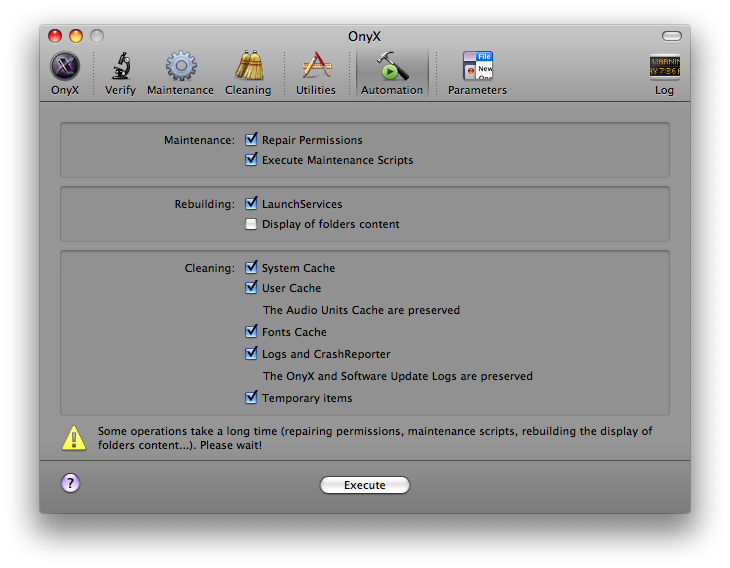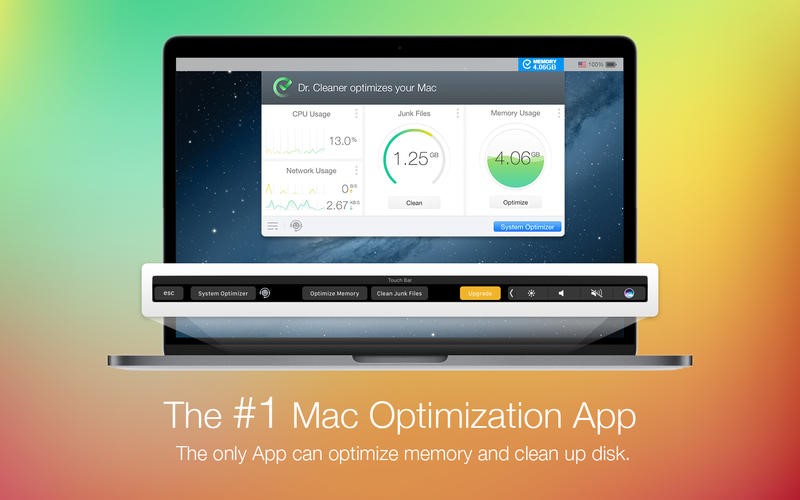Got an Apple, Mac or iOS tech question? We have the answer. This time we take a look at some good options for helping you remove unwanted files from your Mac. It's not necessary for everyone, but if you want some help cleaning up your Mac, these apps will help you cut through the clutter.
SD Maid – System Cleaning Tool on PC (Windows / MAC) Download and install BlueStacks or Remix OS Player. Open the installed BlueStacks or Remix OS Player and open the Google Play Store in it. App Cleaner for Mac is a simple application that uninstalls applications and all associated files. It is available from many download sites, although not from the App Store, and it installs easily. Mac Cleaning Software - MacPaw CleanMyMac 3. Price: 39.95$ CleanMyMac 3 as it name expresses, is an easy to manage Mac cleaning software that made to clean and maintain your Mac. There is a free trial but you need to buy it for 39.95$.
Question

Just wondering - can you guys can tell me what program you would recommend to clean a cluttered Mac?
Answer
For the most part, Macs are pretty good at not leaving behind a lot of clutter, although when you uninstall or delete apps, you might want to double-check the Application Support and Cache folders in your Library folder for any lingering unwanted files. As such, cleaning programs probably aren't necessary for most users. However, if you want some extra help in tidying up your Mac, there are definitely a few programs that can help you get rid of unwanted/unneeded clutter. Here are three solid options, along with an explanation of what each does.
• Daisy Disk: This app gives you a detailed overview of the files on your Mac, and can aid you in finding disk-hogging files and apps that could be removed.
• Clear Disk: Lets you easily clean and remove temporary files, redundant system files, and apps that you don't often use.
• App Zapper: This app lets you easily uninstall apps along with their system files at the same time. Just select the app you want to remove, and App Zapper does the rest.
Got an Apple tech question? Email ask@maclife.com.
The only place I like seeing a beach ball is at a beach or in a stadium during a baseball game or concert. The one place I least like to see a beach ball is on my aging MacBook Pro, where the spinning beach ball has become an altogether too familiar a sight. If your Mac has become frustratingly slow, there are a number of ways you can speed it up again.
Before you engage in any maintenance, I would urge you to take caution and back up your data. For Macs, it's easy: grab an external drive and run Time Machine. With your Mac's drive freshly backed up, you may proceed.
1. Replace your Mac hard drive with an SSD
Moving from a traditional spinning hard drive to a solid-state drive (SSD) is the single best thing you can do to improve the performance of an aging MacBook. Follow Sharon Profis's instructions on how to upgrade your MacBook Pro with an SSD. You'll be shocked at not only how easy it is to do but also at the huge impact it has on performance.
I just performed the maneuver myself, replacing my 2011-era MacBook Pro's 500GB hard drive with the 500GB Samsung 850 EVO . The Samsung SSD and a SATA-to-USB cable kit cost me just north of $200 on Amazon. And the whole procedure took less than an hour (not counting the half a day it took to clone my MacBook's hard drive to the SSD).
Really, the hardest part of the whole thing was tracking down a size 6T torx-head screwdriver for the four torx screws that help hold the hard drive in place.
2. Add more memory (RAM)
While you have your MacBook opened to replace its hard drive, take the opportunity to add more memory. Like the replacing a hard drive, adding more memory is a straightforward, simple process.
Hightail app for mac. • Send and receive files and folders right from your desktop, no need to open a browser • 25% faster uploads • Convert and send files as a PDF • Automatically zip and send files and folders • Resumable upload, protects you from network interruptions • Includes standard features like password protection, certified delivery, file expiration control • Convenient drag and drop and right-click sending options • Remembers previously entered email addresses. Hightail Express is the easiest, fastest way to send and receive files right from your desktop at no extra charge!
First, you need to find the right type of memory for your specific MacBook model. The brand doesn't matter much, just be sure to buy the right amount, type, and speed. Apple has a handy support page that shows the memory specifications for a variety of models, along with an illustrated guide to replacing the memory.
In my case, my early-2011 MacBook Pro has two DIMM slots, each of which is occupied by a 2GB module. Since I don't have any free slots, I will need to replace those two modules with two 4GB modules. I need DDR3 memory with a speed of 1,333MHz.
After finding the right RAM for your MacBook, follow the photos below to install the new memory.
3. Clean your Mac's hard drive
Sometimes, all your MacBook needs is a data clean-up. Over the years, you've probably cluttered your Mac with files and applications you no longer use or need.
Uninstall old Mac apps
Best App To Clean Mac
To get started, let's look in the Applications and Downloads folders. If there are apps in there you can't remember installing, odds are you can live without them. Move them to the Trash to reclaim some hard-drive space.
There are files associated with every application you install, however, and they are left behind when you simply move an application to the Trash. Since Mac OS X doesn't have a built-in uninstaller, AppZapper can uninstall apps and the related files. It's free for the first five zaps, after which you'll need to pay $12.95.
Clean up applications you still use
Cleaning App For Mac
Next, let's clean up the applications you are keeping. When you install an app on your Mac, the piece of software arrives as part of a package of files, including permissions that tell OS X which users can do what things with specific files.
Over time, these permissions can get changed, resulting in your Mac lagging, freezing or crashing. Repairing these disk permissions, in the most basic terms, amounts to reshuffling and re-dealing these permissions so that they return to their rightful place. To address this, OS X has a built-in tool called Disk Utility Quicken like app for mac. that does just the trick.
Slack for mac os. Step 4:Slack to your needs: Team Menu is located next to your name in the upper left corner.
Read my previous post on how to repair disk permissions for a step-by-step guide.
Find out which apps are using the most resources
If your Mac acts like it needs a nap every afternoon, when you are at the height of multitasking, there is an easy way to see which of your open applications is using the most system resources. Open the Activity Monitor.
Storage Cleaning App For Mac
The numbers are constantly fluctuating, but they show you the amount of CPU and memory resources each app is using. After watching the Activity Monitor for a while this morning, I see that Firefox generally takes up more CPU resources and more than triple the memory resources. Perhaps it's time for me to abandon Firefox and use Chrome exclusively. Also, I found that the sluggish iTunes isn't nearly the resource hog I thought it was. My apologies, iTunes.
Delete big, unused files
Now that you've paid some attention to your applications, it's time to look at the files cluttering your drive. You can use Finder to search for huge files. To do so, open Finder and select the volume you'd like to search. Next, choose File > Find (or hit Command-F). Click on the Kind pull-down menu and select Other. When the Select a search attribute window opens, check the box for File Size, uncheck any other boxes, and click OK. Change the 'equals' pull-down menu option to 'is greater than' and then change KB to MB. Enter a minimum files file size such as, say, 100MB. You can then delete any files that show up on the list that you no longer need -- or move them to an external drive at the very least.
4. Reduce login items

If your Mac is slow to boot up, the problem may be that there are too applications to open at startup. It's likely you never set them to launch at startup -- they launch by default.
- Go to System Preferences > Users & Groups and then click on the Login Items tab to see a list of the apps that open when you boot your Mac.
- Highlight the apps you don't want to open at startup and click the minus-sign button below the list of apps.
Free Cleaning App For Mac
5. Keep current with OS X
Apple releases new versions of OS X as free upgrades, so there is no reason not to stay current. New versions of OS X contain performance enhancements and security improvements to keep your Mac running smoothly and safely.
Best Cleaning App For Mac
Check in periodically with the Updates tab of the Mac App Store for OS X updates, and don't ignore notifications of updates that are ready to install.
Best App Cleaner For Mac
Editor's note: This story was originally published on April 27, 2015 and has since been updated to add new advice and tips for speeding up your Mac computer.